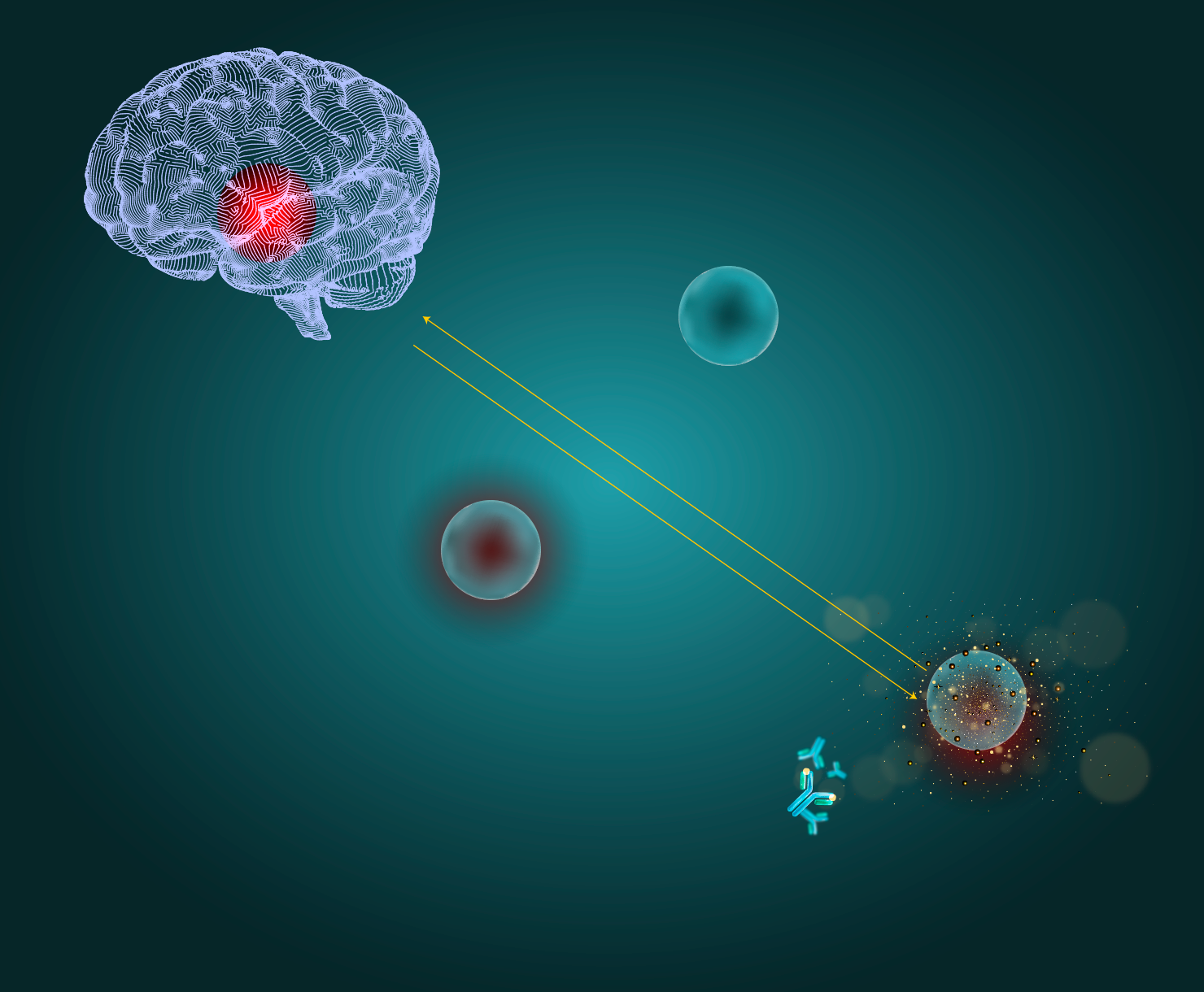Traumatic Brain Injury
Traumatic brain injury (TBI) is widespread, affecting civilian and military populations alike. While MRI and CT scans are the reference standards for TBI diagnosis and management, they are not quantitative measures and are frequently unavailable in emergency settings.
Newly published collaborative research under a U.S. Department of Defense grant asked if TBI biomarkers might bind at ultra-low levels to the surface of leukocytes (Military Medical Photonics Program FA9550-16-1-0479)
Could the surface of circulating leukocytes be a new and highly accessible compartment for TBI biomarkers?
One such biomarker, glial fibrillary acidic protein (GFAP), is present in the serum of healthy subjects and is transiently elevated for 24 – 48 hours in TBI [1].
A combined dark field and fluorescence microscope detected anti GFAP conjugated 80nm gold nanoparticles on specific subsets of leukocytes. This research shows for the first time that GFAP binds at ultra-low levels to B-cells and monocytes in healthy subjects [2].
This study also reports a scanning electron microscope analysis of anti GFAP gold nanoparticle binding. It demonstrated a high level of anti GFAP nanoparticle specificity and a low level of Fc binding.
This published work paves the way for seeking answers to the following questions:
- Is GFAP distributed differently across leukocyte subsets in TBI?
- Is the half-life of leukocyte surface bound GFAP extended beyond that for serum GFAP?
- Is there a cell mediated immune response to TBI?
- Is there a role for leukocyte bound GFAP in therapy monitoring?

[1]EP. Thelin et al. ” Serial Sampling of Serum Protein Biomarkers for Monitoring Human Traumatic Brain Injury Dynamics: A Systematic Review.” Front Neurol. 2017 Jul 3;8:300. doi: 10.3389/fneur.2017.00300. PMID: 28717351; PMCID: PMC5494601. [link]
[2]F. Peng et al. “Assessment of Glial Fibrillary Acidic Protein Binding to the Surface of Leukocytes with Dark‐Field Imaging and Computational Analysis.” Adv. Funct. Mater. 2021, 2009229. https://doi.org/10.1002/adfm.202009229 [link]
